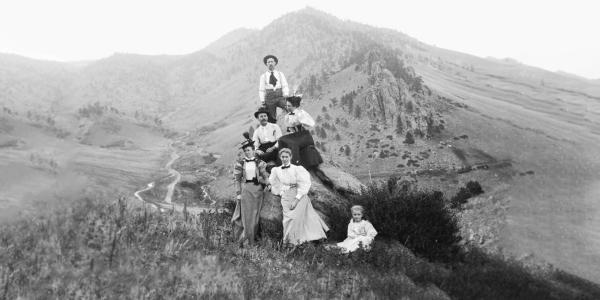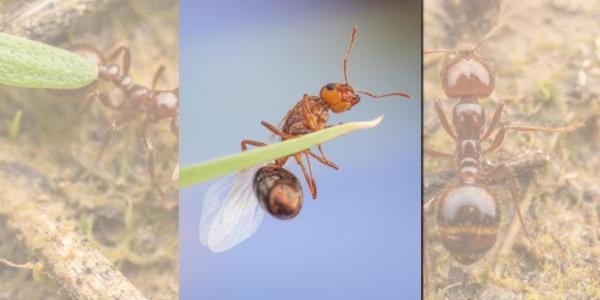In her latest research, contemporary art history professor examines where art and environmental activism connect
For Brianne Cohen, assistant professor of contemporary art history at the University of Colorado Boulder, art is much more than an aesthetic: It can offer powerful commentary on the issues of the day and galvanize public opinion.
One such issue, ecological devastation, is the focus of Cohen’s latest research into photography and video from Cambodia, Vietnam and Singapore that highlights the need for renewed attention on the kinship between humans and nature.
“These artists are having their works shown around the world in major art shows, but there’s still not being much written about their wonderful work,” Cohen says. “The kinds of things they are doing right now is particularly pressing and timely in terms of environmental destruction in the region and thinking about larger questions of ecological sustainability.”
The intersection of art and the environment is not a new topic for Cohen, who teaches art, climate justice and ecology courses at CU Boulder. Now more than ever, she says, art offers an invaluable window to the world.

At the top of the page: Nguyễn Trinh Thi, Letters from Panduranga (2015), video still. Above: Brianne Cohen's recent research addresses questions of ecological devastation and the formation of critical publics in Southeast Asia, particularly in Vietnam, Cambodia, and Singapore.
“This is how we think about the world today—through a flood of imagery. And to be able to think critically about the main issues of the day through art, it’s just so fascinating, and it really draws students in,” she says. “I think it’s a great kind of language to think about how we live in today’s world.”
Art also has the power to be transformative at the personal level. In Cohen’s case, she grew up modestly in Dallas, Texas, but was able to take a two-week trip in high school to visit major art museums in London, Paris and Italy that inspired her to make art history her life’s work.
Another transformative moment came while taking an art class as an undergraduate student.
“The first time that I realized that art history could tackle contemporary issues was in college, when I took a class with an art critic from L.A.—and she exposed us to all this vibrant art-making in the city and in the region,” Cohen says. “Whereas, in the past, when I was a younger scholar, it seemed art history pretty much ended in 1960 or 1970. So, to be exposed to that world was really exciting, and that made me want to study contemporary issues through art and through a visual lens.”
That belief was only deepened when Cohen attended the Courtauld Institute of Art in London to obtain her MA degree and then spent three years researching and teaching in Belgium while on a postdoctoral fellowship.
The time she spent in Europe was formative in the development of her forthcoming book, Don’t Look Away: Art, Nonviolence and Preventive Publics in Contemporary Europe, set to publish in spring 2023, which examines contemporary European art as it grapples with thorny topics such as immigration, xenophobia and Islamaphobia.
It was also during that period that Cohen first began taking periodic trips to Southeast Asia, where she discovered the vibrant, compelling art created there.
“I’d say in the past 10 years I became much more interested in environmental issues as artists there were tackling them,” she says.
“I was thinking about how, especially artists in the U.S. and Europe, get so much more publicity within art history and visual culture in terms of the environment, whereas we’re not even thinking about . . . artwork from around the world where they are most affected by climate change—and where devastation is even larger and more unequal in terms of who suffers these effects and who is least responsible for them.”
There is a question of compassion fatigue. If we’re barraged with all these images of atrocity and war and so forth, can we actually move as a public to effect change? So, that’s the big question for me. Can they do that? I think that (the images) can.”
She adds, “The work coming out of Southeast Asia grapples with these questions and deserves to have more of a voice in that discussion.”
Many people are familiar with issues like deforestation, habitat loss and global warming, but Cohen believes art can nonetheless make a difference on those important topics.
“There is a question of compassion fatigue. If we’re barraged with all these images of atrocity and war and so forth, can we actually move as a public to effect change? So, that’s the big question for me. Can they do that?” she says. “I think that (the images) can.”
Still, Cohen says the efforts from artists in the region will take time to bear fruit.
“These artists are looking to longer-term, Indigenous philosophies from their local regions—philosophies that have a more sustainable way of living with the environment, of being in relation with the environment through notions of kinship or familial relations,” she says.
“This is really important in the work that they do—and not thinking about the environment as objects to be exploited, but as family, as persons in some sense to live with and to care for.”
Cohen’s research is supported by fellowships from the American Association of University Women and CU Boulder’s Center for Humanities and the Arts.



